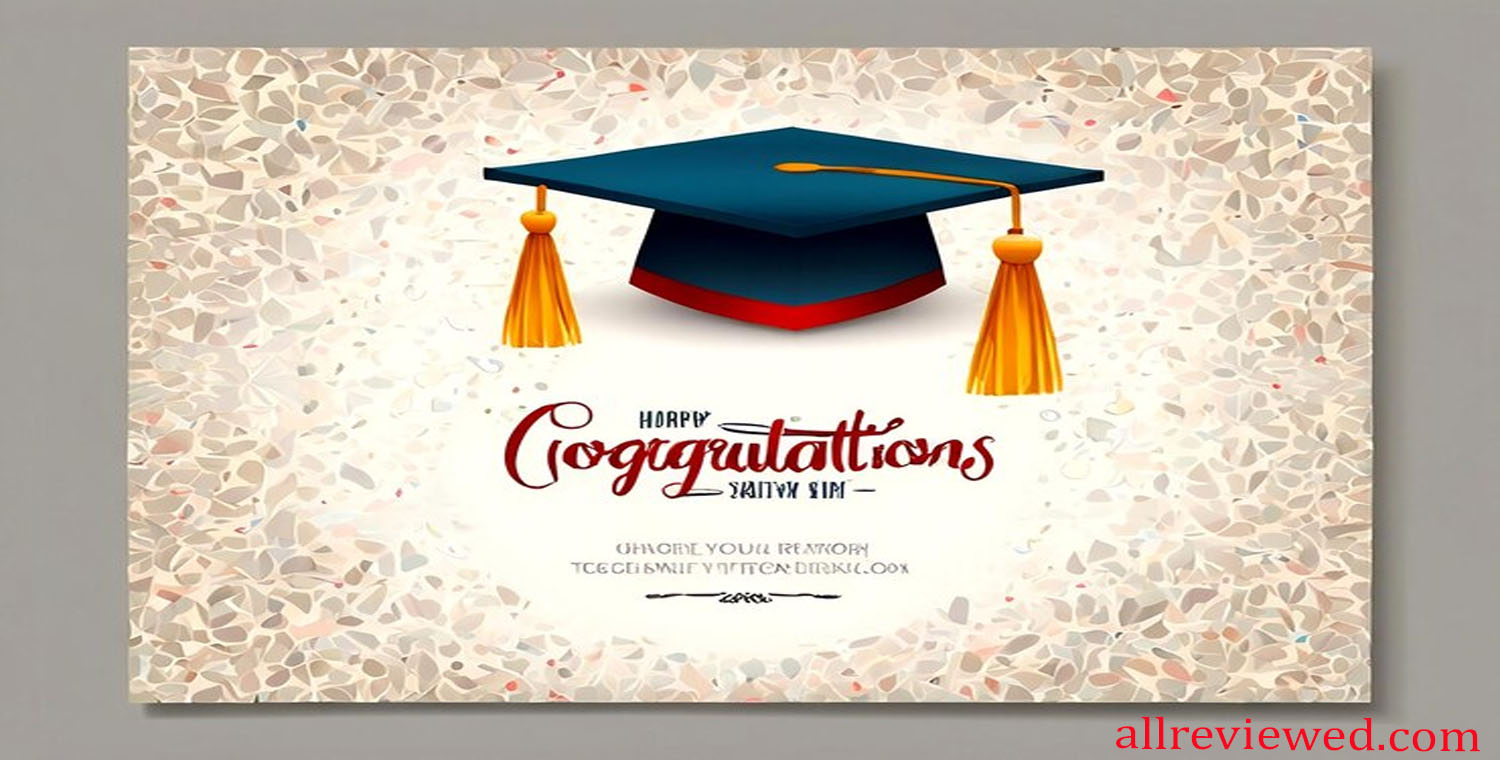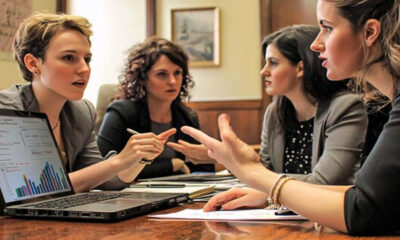Blog
Ferdinand Berthier: A Deep Dive into the Life and Legacy of a Trailblazer

Welcome to our comprehensive guide on Ferdinand Berthier, a name that resonates with innovation and excellence in his field. Whether you’re just learning about him or looking to deepen your understanding, this article provides a thorough look at his life, work, and lasting impact. Let’s embark on this journey to explore who Ferdinand Berthier is and why he matters.
Early Life and Background
Ferdinand Berthier was born on [Insert Birthdate] in [Insert Birthplace], into a family that valued education and intellectual curiosity. Growing up, he was influenced by [describe early influences, e.g., family, local culture]. His education began at [Insert Educational Institutions], where he excelled in [relevant subjects or fields]. These early experiences shaped his future career and laid the foundation for his remarkable journey.
Career Beginnings
Berthier’s professional career took off when he began working at [Insert Initial Job or Project]. His initial roles included [describe early roles or projects], which provided him with valuable experience and insight into his field. During this time, he demonstrated a knack for [describe skills or attributes], setting the stage for his future achievements.
Rise to Prominence
As Ferdinand Berthier’s career progressed, he reached several key milestones that solidified his reputation. His breakthrough came with [Insert Notable Achievement or Project], which garnered widespread attention and acclaim. This project highlighted his unique skills and contributions, marking the beginning of his rise to prominence in [his field/industry].
Major Works and Contributions
Berthier’s portfolio includes a range of significant works that have made a considerable impact on his field. Notable among these are [Insert Major Works or Projects], each of which has contributed to [describe the impact, e.g., advancing technology, shaping industry standards]. These works exemplify Berthier’s innovative approach and his ability to address complex challenges.
Ferdinand Berthier’s Influence on the Industry
Berthier’s influence extends far beyond his own work. His innovations have shaped contemporary practices and inspired others in the industry. For example, [Insert Specific Influence or Example] illustrates how his ideas have been adopted and adapted by others. This influence underscores his role as a leading figure in [his field/industry].
Awards and Recognitions
Throughout his career, Ferdinand Berthier has received numerous awards and honors that recognize his exceptional contributions. These include [Insert List of Awards], each of which reflects the high regard in which he is held by his peers and the broader community. These recognitions not only celebrate his achievements but also highlight his impact on [his field/industry].
Philosophy and Approach
At the heart of Berthier’s success is his personal philosophy and approach to his work. Known for [Insert Key Aspects of Philosophy], Berthier emphasizes [describe core principles, e.g., innovation, precision]. This approach has guided his career and led to his success, providing valuable insights into his process and mindset.
Challenges and Obstacles
No career is without its challenges, and Berthier’s journey has been no exception. He faced [Insert Major Challenges], which tested his resilience and problem-solving skills. Through perseverance and strategic thinking, Berthier overcame these obstacles, demonstrating his ability to adapt and thrive in a competitive environment.
Current and Recent Projects
Today, Ferdinand Berthier continues to be actively involved in [Insert Current Projects or Initiatives]. These projects reflect his ongoing commitment to [describe current focus, e.g., advancing research, developing new technologies]. His future plans include [Insert Future Plans], promising further innovation and impact in his field.
Public and Critical Reception
The reception of Berthier’s work has been overwhelmingly positive. Public and critical reviews often highlight [Insert Positive Aspects], praising his contributions and achievements. Feedback from both audiences and critics underscores his status as a leading figure in [his field/industry].
Comparison with Peers
When compared to other professionals in his field, Ferdinand Berthier stands out for [Insert Unique Aspects]. Unlike his peers, Berthier has [describe unique contributions or approaches], which have set him apart and contributed to his success. This comparison highlights his distinctive role and impact.
Future Outlook
Looking ahead, the future for Ferdinand Berthier is promising. Predictions suggest that his work will continue to [Insert Expected Trends or Developments]. As he embarks on new projects and initiatives, his influence is likely to expand, shaping the future of [his field/industry].
Personal Life and Interests
Beyond his professional accomplishments, Berthier leads a fulfilling personal life. He is known for [Insert Personal Interests or Hobbies], which provide a well-rounded perspective on his character. These interests reflect his diverse talents and contribute to his overall approach to life and work.
Conclusion
In conclusion, Ferdinand Berthier’s life and career are a testament to dedication, innovation, and excellence. From his early beginnings to his current successes, Berthier has made a significant impact on his field. His contributions continue to inspire and influence, setting new standards and paving the way for future advancements. As we look forward to his future endeavors, it is clear that Berthier’s legacy will endure and continue to shape [his field/industry].
FAQs
- Who is Ferdinand Berthier?
- Ferdinand Berthier is a prominent [insert profession or field], known for his significant contributions to [describe area of expertise]. His work has had a profound impact on [his field/industry], establishing him as a leading figure.
- What are Ferdinand Berthier’s major achievements?
- Berthier’s major achievements include [Insert Notable Achievements or Projects]. These accomplishments have been pivotal in shaping [his field/industry] and have earned him recognition and respect.
- What is Ferdinand Berthier’s philosophy and approach?
- Berthier’s philosophy centers on [describe core principles or approach]. His approach emphasizes [insert aspects, e.g., innovation, precision], which has guided his work and contributed to his success.
- What challenges has Ferdinand Berthier faced in his career?
- Berthier has faced challenges such as [Insert Major Challenges]. Despite these obstacles, he has demonstrated resilience and adaptability, overcoming difficulties through strategic thinking and perseverance.
- What are Ferdinand Berthier’s current and future projects?
- Currently, Berthier is involved in [Insert Current Projects]. Future plans include [Insert Future Plans], which aim to [describe goals or expected outcomes], continuing his legacy of innovation and impact.
- How has Ferdinand Berthier influenced his field?
- Berthier’s influence is evident in [Insert Examples of Influence]. His work has set new standards and inspired others, shaping contemporary practices and contributing to advancements in [his field/industry].
Blog
7 Things You Need to Know About TikTok Influencer Marketing (with Global Brand Examples)

TikTok has transformed how brands connect with audiences. What started as a platform for dance trends and memes has become one of the most effective influencer marketing channels in the world. From indie beauty startups in Korea to global fashion brands in the US, TikTok’s creator community is now central to shaping what consumers buy, trust, and talk about.
Whether you’re a small business in Hong Kong or a multinational brand entering Southeast Asia, here are 7 essential things you need to know about TikTok influencer marketing—along with real examples of how brands are doing it right.
1. Micro-Influencers Are Winning Attention in Big Markets
You don’t need to hire a celebrity to make an impact on TikTok. In fact, many of the most effective campaigns use micro-influencers with 10K–100K followers. These creators often have stronger engagement rates and niche audiences.
In the US, skincare brand CeraVe successfully partnered with micro-influencers who shared personal skincare routines. The authentic, low-production-value videos outperformed glossy ads and helped make CeraVe one of TikTok’s most talked-about drugstore brands.
2. Localization Matters More Than Ever
A one-size-fits-all campaign rarely works on TikTok. Localization—both in content and creator selection—is crucial.
In Indonesia, brands like Wardah Cosmetics work with Muslim beauty creators to reflect cultural norms and everyday beauty practices. Meanwhile, in Japan, minimalist brands like MUJI collaborate with creators who focus on aesthetic home organization videos.
If you’re a Hong Kong-based seller trying to enter foreign markets via TikTok Shop, choosing the right local creator can drive faster traction than paid ads.
3. TikTok’s Creator Marketplace Makes It Easier to Collaborate
TikTok has an official Creator Marketplace where brands can search for influencers by country, category, engagement rate, and audience demographics. This tool is especially useful for small brands in places like Singapore or Vietnam looking to scale quickly without going through an agency.
By using the marketplace, you can manage collaborations, set campaign goals, and track performance in one place.
4. Live Shopping + Influencers = Real-Time Conversions
One of the most powerful formats on TikTok is live shopping. Influencers demonstrate products live, answer questions, and offer time-limited deals, creating urgency and trust.
In Thailand, popular beauty creators host nightly live shows featuring everything from serums to lip tints. Brands like Mistine and 4U2 have seen massive sales spikes during these sessions.
The combination of entertainment and eCommerce creates an experience that feels more like a recommendation from a friend than a traditional ad.
5. Trending Sounds Can Make or Break a Campaign
TikTok is an audio-first platform. Campaigns that ride the momentum of trending sounds or memes often outperform those that don’t.
A great example comes from South Korea, where fashion label Stylenanda launched a campaign with a trending K-pop sound. The result was thousands of user-generated outfit videos using the same audio, boosting both brand visibility and organic reach.
Staying culturally in tune with music and audio trends in each country is essential for campaign relevance.
6. Affiliate Marketing and Influencers Go Hand in Hand
TikTok Shop allows creators to earn commissions through affiliate links. This has turned many everyday creators into active sales agents.
In the Philippines, creators frequently promote gadgets, household items, and beauty tools from TikTok Shop, earning money on each sale. Brands benefit from viral traction without paying upfront fees—just a share of the revenue.
This affiliate model is now a major part of influencer marketing strategy for cost-conscious sellers.
7. Influencer Reviews Build Trust Faster Than Ads
On TikTok, product reviews feel real—because they often are. A genuine review from a creator can generate more trust than any professionally produced brand ad.
UK-based health brand MyProtein used this strategy to launch in Malaysia, working with fitness creators to review their products in short videos. Rather than polished endorsements, the creators shared their gym routines and honest opinions, driving authentic interest from local audiences.
The unfiltered, casual nature of TikTok content is exactly what makes it effective.
TikTok influencer marketing isn’t just a trend—it’s the new baseline for digital brand building across Asia, the US, and beyond. By working with creators who know their audience, respecting local culture, and leveraging features like live shopping and affiliate tools, brands can turn TikTok into a revenue-generating engine. Whether you’re launching a new product in Hong Kong, testing the waters in the US, or scaling in Southeast Asia, TikTok creators could be your most powerful sales team.
Blog
Graduation Wishes for Daughter – Congratulation Messages

Graduation is a significant milestone in a young woman’s life, marking the culmination of years of hard work, dedication, and growth. As a parent, expressing your pride and joy through heartfelt Graduation Wishes is a wonderful way to celebrate this achievement. This article will provide you with a variety of messages, from flirty to humorous, to help you convey your love and congratulations to your daughter on her special day.
Flirty Graduation Wishes Quotes

If you want to add a playful touch to your graduation wishes, consider these flirty quotes:
- “Congratulations, graduate! You’ve officially mastered the art of looking fabulous while studying hard!”
- “You’ve graduated! Now you can focus on being the amazing woman I always knew you’d be. Let’s celebrate!”
- “You’re not just a graduate; you’re a total catch! Can’t wait to see what you do next!”
Short and Sweet Graduation Wishes Messages
Sometimes, a simple message is all you need. Here are some short and sweet graduation wishes for your daughter:
- “Congratulations on your graduation! I’m so proud of you!”
- “You did it! Wishing you all the best in your next adventure!”
- “Your hard work has paid off! Happy graduation!”
Playful and Romantic Graduation Wishes Lines
For those who want to express their affection in a light-hearted way, these lines can do the trick:
- “You’ve graduated, and the world is your oyster! Go out there and shine, my beautiful daughter!”
- “Your future is as bright as your smile! Congratulations on this amazing achievement!”
- “You’ve worked so hard, and now it’s time to celebrate! Let’s make unforgettable memories together!”
Jokes About Graduation Wishes
A little humor can add joy to your graduation greetings. Here are some light-hearted jokes to share:
- “Why did the graduate bring a ladder to the ceremony? Because they wanted to reach new heights!”
- “What did the graduate say to their diploma? ‘You complete me!’”
- “Why did the student eat their homework? Because the teacher said it was a piece of cake!”
Graduation Wishes Messages to Make Her Smile
If you want to bring a smile to your daughter’s face, consider these cheerful messages:
- “Congratulations, my dear! Your hard work has paid off, and I couldn’t be prouder!”
- “You’ve achieved something incredible! Here’s to new beginnings and endless possibilities!”
- “Your graduation is just the beginning of a beautiful journey. I can’t wait to see where it takes you!”
How to Personalize Graduation Wishes Messages
Personalizing your graduation wishes can make them even more special. Here’s how:
Understanding Her Personality
Consider your daughter’s personality when crafting your message. Is she serious, playful, or romantic? Tailor your message to fit her style.
Incorporating Inside Jokes or Memories
If you have shared experiences or inside jokes, including them can create a sense of connection and warmth in your message.
Contact Allreviewed Team for Personalized Graduation Wishes Messages
If you’re looking for more tailored options, the Allreviewed team can help you craft the perfect graduation message that reflects your relationship and sentiments.
Who is the Allreviewed Team?
The Allreviewed team specializes in creating personalized messages for various occasions, including graduations. They understand the importance of heartfelt communication and can help you find the right words to express your pride and love.
How Allreviewed Helps You Craft Perfect Messages
With their expertise in message crafting, the Allreviewed team can provide you with unique ideas, templates, and personalized suggestions to ensure your graduation wishes are memorable and heartfelt.
FAQs About Graduation Wishes Messages
What makes a Graduation Wishes message special?
A special graduation message resonates with the recipient, reflects genuine pride, and acknowledges the significance of their achievement.
Can flirty messages be romantic too?
Absolutely! Flirty messages can carry a romantic undertone, especially when they express affection and playfulness.
Are jokes appropriate in a Graduation Wishes message?
Jokes can be a great way to lighten the mood, but ensure they are appropriate for the recipient and align with their sense of humor.
How do I keep Graduation Wishes messages fresh and unique?
To keep your messages fresh, consider personal anecdotes, shared memories, or even quotes that resonate with your daughter’s journey.
Where can I find more personalized Graduation Wishes quotes?
You can explore various online resources, including websites like Allreviewed, which offer a collection of graduation messages and quotes tailored to different situations. Additionally, social media platforms and forums can provide inspiration from others who have shared their experiences and sentiments.
Blog
Happy Boyfriend Day – Wishes, Messages, and Quotes

Boyfriend Day is a special occasion dedicated to celebrating the love and affection we share with our partners. It’s a day to express appreciation for the wonderful boyfriends in our lives and to remind them just how much they mean to us. Whether you want to send a flirty message, a heartfelt wish, or a playful quote, AllReviewed is here to help you craft the perfect message for your boyfriend. Here’s a guide to making Boyfriend Day memorable!
Flirty Boyfriend Day Quotes

If you want to add a playful touch to your Boyfriend Day wishes, consider these flirty quotes:
- “Happy Boyfriend Day! You must be a magician because whenever I look at you, everyone else disappears!”
- “To my handsome boyfriend, Happy Boyfriend Day! You’re the reason I believe in love at first sight.”
- “Happy Boyfriend Day! If kisses were snowflakes, I’d send you a blizzard!”
Short and Sweet Boyfriend Day Messages
Sometimes, a simple message can convey your feelings perfectly. Here are a few short and sweet Boyfriend Day messages:
- “Happy Boyfriend Day! You make my heart smile!”
- “Cheers to you on Boyfriend Day! I’m so lucky to have you!”
- “Happy Boyfriend Day! You’re my favorite person!”
Playful and Romantic Boyfriend Day Lines
For those who want to add a romantic flair to their messages, here are some playful lines:
- “Happy Boyfriend Day! You’re the peanut butter to my jelly, and I love you more than words can say!”
- “To my amazing boyfriend, Happy Boyfriend Day! You make every day feel like a fairytale.”
- “Happy Boyfriend Day! With you, every moment is a treasure, and I can’t wait to make more memories together!”
Jokes About Boyfriend Day
A little humor can lighten the mood and bring a smile. Here are some light-hearted jokes related to Boyfriend Day:
- “Why did the boyfriend bring a ladder to Boyfriend Day? Because he wanted to take their relationship to new heights!”
- “What did the girlfriend say to her boyfriend on Boyfriend Day? ‘You’re the best catch since I caught you!’”
- “Why did the boyfriend get a job at the bakery? Because he kneaded the dough to buy his girlfriend a cake for Boyfriend Day!”
Boyfriend Day Messages to Make Him Smile
Sending a thoughtful message can brighten your boyfriend’s day. Here are some Boyfriend Day messages designed to make him smile:
- “Happy Boyfriend Day! You make my life so much brighter just by being in it!”
- “Wishing you a fantastic Boyfriend Day! You deserve all the love and happiness in the world!”
- “Happy Boyfriend Day! Thank you for being you—funny, sweet, and oh-so-amazing!”
How to Personalize Boyfriend Day Messages
Personalizing your Boyfriend Day messages can make them even more meaningful. Here’s how to do it:
Understanding His Personality
Consider your boyfriend’s personality when crafting your message. Is he serious, playful, or romantic? Tailor your words to resonate with him.
Incorporating Inside Jokes or Memories
Adding inside jokes or shared memories can create a unique connection. Reference a funny moment or a cherished experience to make your message special.
Contact AllReviewed Team for Personalized Boyfriend Day Messages
If you’re looking for more personalized messages, the AllReviewed team is here to help! We specialize in crafting messages that resonate with your loved ones.
Who is the AllReviewed Team?
The AllReviewed team consists of creative writers and relationship experts dedicated to helping you express your feelings through words. We understand the importance of connection and strive to provide you with the best Boyfriend Day messages.
How AllReviewed Helps You Craft Perfect Messages
At AllReviewed, we offer a variety of resources, including tips, examples, and personalized message crafting services. Whether you need a flirty line or a heartfelt note, we’ve got you covered.
FAQs About Boyfriend Day Messages
What makes a Boyfriend Day message special?
A special Boyfriend Day message is one that resonates with the recipient, evokes positive emotions, and reflects genuine care and thoughtfulness.
Can flirty messages be romantic too?
Absolutely! Flirty messages can carry a romantic undertone, making them perfect for expressing affection while keeping things light and fun.
Are jokes appropriate in a Boyfriend Day message?
Yes! A well-placed joke can add humor and warmth to your message, making it more enjoyable for the recipient.
How do I keep Boyfriend Day messages fresh and unique?
To keep your messages fresh, mix up your style, incorporate new quotes, and personalize them based on current events or shared experiences.
Where can I find more personalized Boyfriend Day quotes?
You can find more personalized quotes and messages by exploring various online resources, including relationship blogs, social media platforms, and dedicated message crafting websites like AllReviewed. Additionally, consider reaching out to friends or family for inspiration or ideas that resonate with your boyfriend’s personality.
-

 Blog1 year ago
Blog1 year agoFree Public Domain Images for Commercial Use
-

 Blog1 year ago
Blog1 year agoLove Shayari in English: An In-Depth Guide
-

 Blog1 year ago
Blog1 year ago“Unveiling Vergando: Navigating the Dynamics of Modern SEO”
-

 Blog12 months ago
Blog12 months agoA Comprehensive Guide to Sveston Watches: Style, Features, and Buying Tips
-

 Blog1 year ago
Blog1 year ago“Unleashing Envy: How to Make Spencer Bradley Jealous”
-

 Blog1 year ago
Blog1 year agoUnlocking the Power of Opera GX Twitter: A Comprehensive Guide
-

 Blog1 year ago
Blog1 year agoStages: Navigating Life’s Phases
-

 Blog1 year ago
Blog1 year agoArrow Tattoos: A Comprehensive Guide




